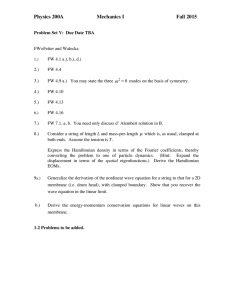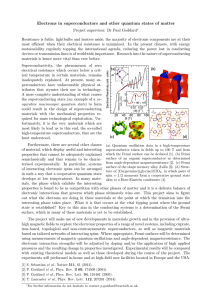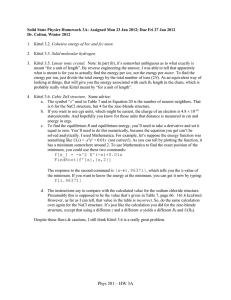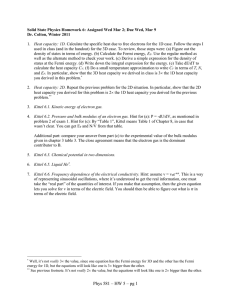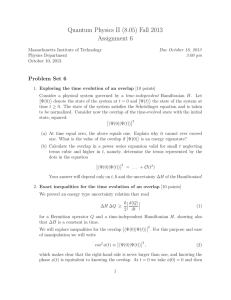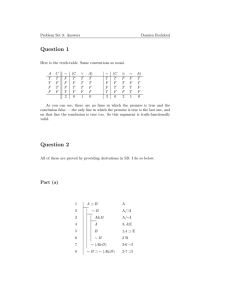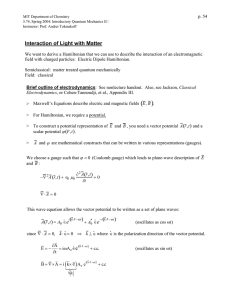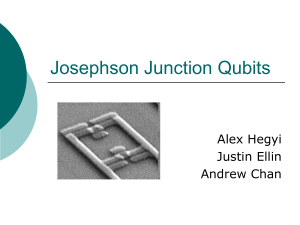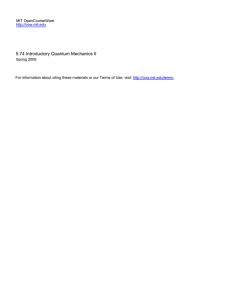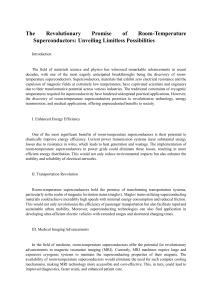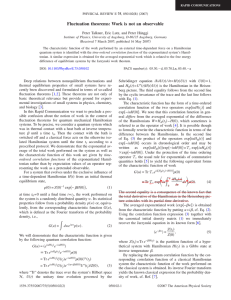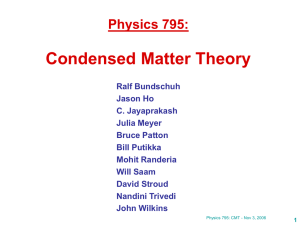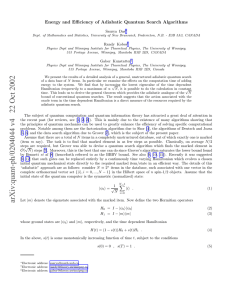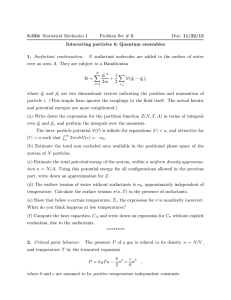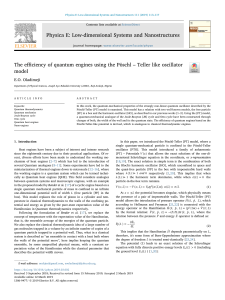Physics 489 Problem Set 8 Due Thursday, Dec. 3
advertisement
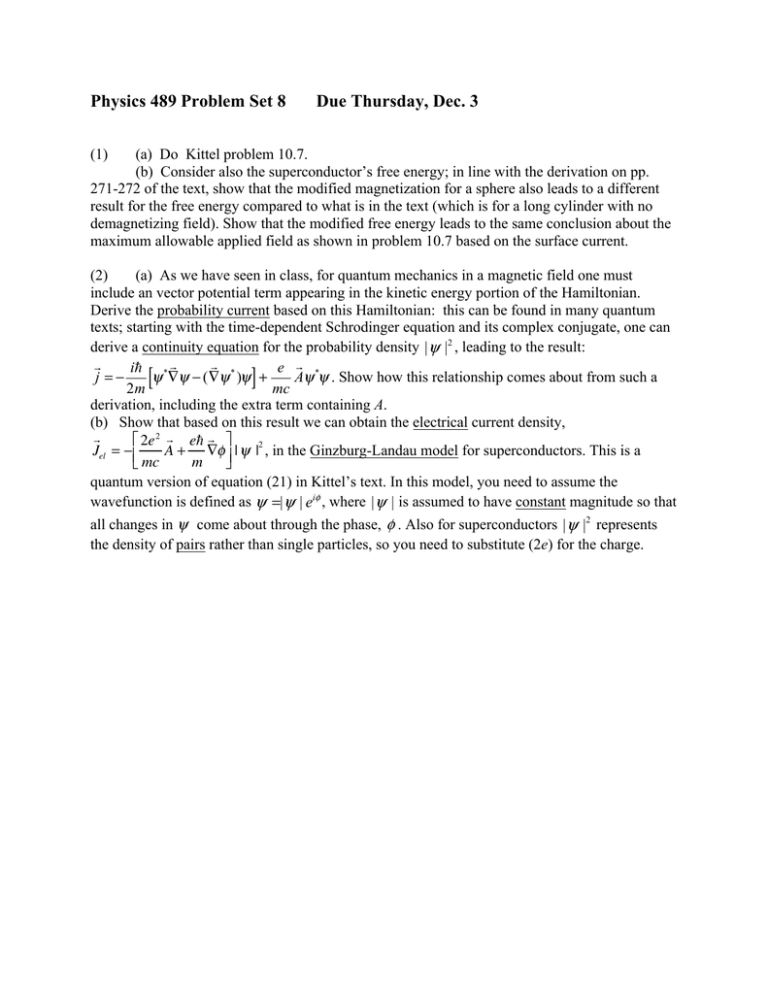
Physics 489 Problem Set 8 Due Thursday, Dec. 3 (1) (a) Do Kittel problem 10.7. (b) Consider also the superconductor’s free energy; in line with the derivation on pp. 271-272 of the text, show that the modified magnetization for a sphere also leads to a different result for the free energy compared to what is in the text (which is for a long cylinder with no demagnetizing field). Show that the modified free energy leads to the same conclusion about the maximum allowable applied field as shown in problem 10.7 based on the surface current. (2) (a) As we have seen in class, for quantum mechanics in a magnetic field one must include an vector potential term appearing in the kinetic energy portion of the Hamiltonian. Derive the probability current based on this Hamiltonian: this can be found in many quantum texts; starting with the time-dependent Schrodinger equation and its complex conjugate, one can derive a continuity equation for the probability density | ψ |2 , leading to the result: i * e * j =− ψ ∇ψ − ( ∇ψ * )ψ + Aψ ψ . Show how this relationship comes about from such a 2m mc derivation, including the extra term containing A. (b) Show that based on this result we can obtain the electrical current density, ⎡ 2e 2 e ⎤ Jel = − ⎢ A + ∇φ ⎥ | ψ |2 , in the Ginzburg-Landau model for superconductors. This is a m ⎣ mc ⎦ quantum version of equation (21) in Kittel’s text. In this model, you need to assume the wavefunction is defined as ψ =| ψ | eiφ , where | ψ | is assumed to have constant magnitude so that all changes in ψ come about through the phase, φ . Also for superconductors | ψ |2 represents the density of pairs rather than single particles, so you need to substitute (2e) for the charge. [ ]



